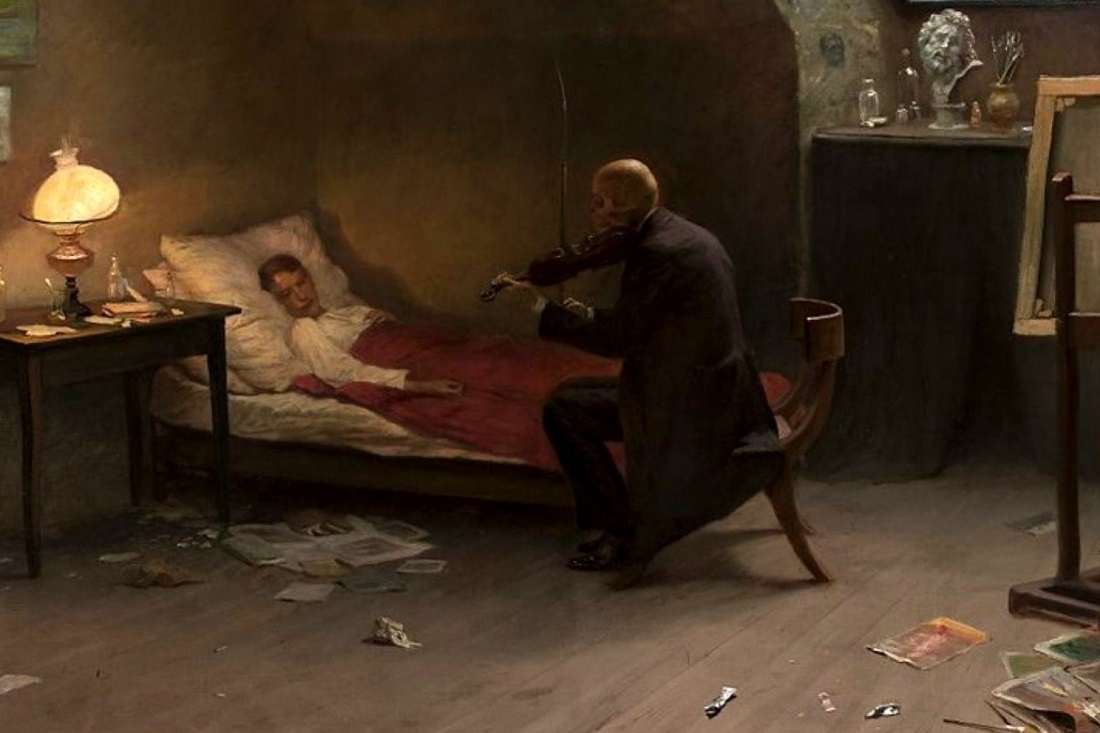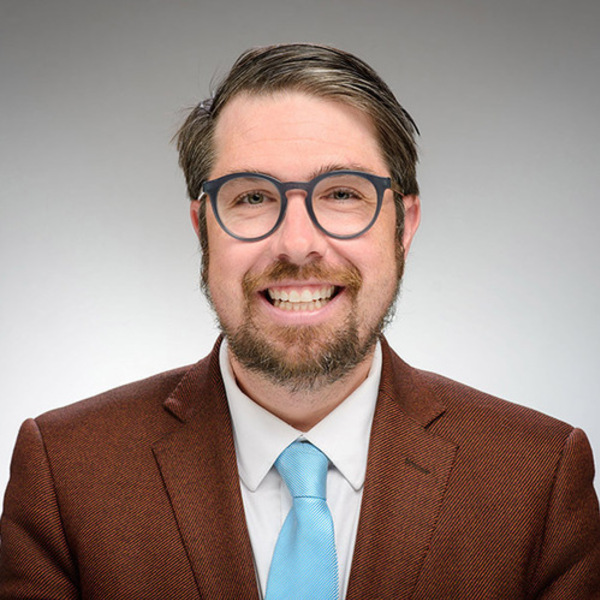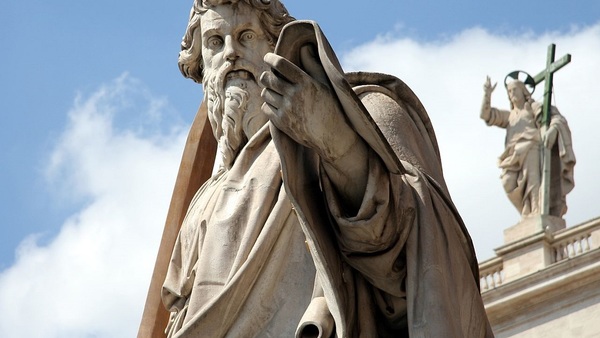Ideology, as Don Giussani notes in The Religious Sense, is a preconception that takes up one dimension of reality, one facet of truth, and deforms it into an absolute. In this sense, an ideology becomes a blinder that enables us to perceive the world in but a single way. Only this scientific theory can explain reality! Only this economic proposal! Only this . . . !
In the last 25 years Catholic formation—a broader term that includes both education within schools and also life within the parish and the home—has been dying from such an ideological blinding.
This inability to think coherently about the task of Catholic formation is the consequence of an imbalanced account of experience. In this account, “experience” is at odds with the language of Tradition. The important thing, according to this account, is that people have a lived experience of faith, not that they believe in the Trinity, understand Catholic social doctrine, or grasp the main rudiments of Christian history. Texts and ideas are but ciphers to the true source of education—the category of “lived experience.”
This approach to experience has influenced contemporary Catholicism’s understanding of divine revelation. The ideology of experience enters the very account of divine revelation, whereby every man or woman must measure the veracity of the Christian event according to his or her experience. If my experience is different than what the Tradition proposes, then the Tradition will need to be changed, augmented, or left behind for the sake of my lived experience. Divine revelation and human life are mutually critical and thus informative of one another. My life has something to say to Christian Tradition, and Christian Tradition has something to say to my life. It is up to me, the individual, to determine what.
Of course, there are problems with this account of experience. First, it passes over the fundamental meaning of experience. Experience is not a category that the human person undergoes in certain instances. To be human from the very beginning is to “have experiences.” It is to see, taste, touch, feel, smell, conceive, grasp, understand, imagine, remember, and will. All of this is part of human experience. Therefore, there is never an encounter with the Tradition that is not itself already an experience for the person who engages in this encounter. When we proclaim that “God is love,” the very utterance is already an experience. When we hear about the preferential option for the poor, that is already an experience.
Second, the undue focus on “lived experience” as a privileged category for interpreting the Tradition suffers from a certain naivety. Namely, it presumes that a lived experience—at least one that we can consciously articulate—is not already shaped by a Tradition. Of course, there is a pre-conscious dimension of human life. I suffer from a fear of death, a horror at contingency, that I may not always be aware of. I may make unconscious decisions around this paralyzing fear. But the moment that I can “articulate” the lived experience of death through language, through describing my “lived experience,” then I need to draw on at least some aspect of a Tradition to do so. If I speak it aloud, I am drawing on a language that I have received from elsewhere. Likely, I am employing a lens to “interpret” my experience that were given to me.
Third, it also places the individual experience as the primary referee of all traditions, including Christianity. It is the isolated monad who becomes the prime assessor of the Tradition, who determines what is in or what is out. It is assumed that the Tradition is itself simply a series of ideas that the knower can construct or deconstruct on his or her own. Yet, the Tradition is not that within Christianity. The Word of God is understood in Catholicism as Scripture and Tradition. Therefore, when we speak about Tradition, it is the echo of a wisdom that comes from Christ down the ages. It is the result of a common experience that precedes the individual. Sometimes, this common experience may need nuance; it requires development. Such development will not unfold by setting the individual apart from the Tradition. Only through immersing oneself into the Tradition does it become possible to participate in authentic development. In this sense, the individual must encounter what is proposed within the Tradition, an encounter that is not reducible to a series of abstract ideas. The encounter with Christian Tradition becomes an entrance into a community, an awareness that our forebears have something to say about how we may interpret what it means to be a human being.
The ideology of experience is not the only blinder found in Catholic formation. Some years ago, I remember a priest saying that good catechesis, good Catholic education, was akin to teaching a parrot to speak. The parrot is to repeat after the one speaking, memorizing everything, gaining the capacity to give oneself over to a Tradition, a text, an idea before one needs to think about it. Ergo, spend some years as a parrot, and one day, you can seek understanding.
But human beings are not parrots! The young child, even the infant, does not just learn to speak without thinking, an experience of the body given over to the speech-act. The young child learns to speak because they gaze upon the face of the beloved mother and father. There, in this act of love, they see the movement of lips. They take up the texts that are important, even sacred, for their mother and father. Notice that it is love that precedes the act of imitation. One seeks to imitate one’s parents, one’s siblings because that parent and sibling is a known object of love.
This in fact is the result of experience. The child has learned from the beginning that this mother and this father are always there. When baby cried in the middle of the night, mom and dad came over. Plus, brother and sister spent time with the child. In the course of this communion, the child discovers that there are others in the world who may be loved. Experience and Tradition, love and speech are united together from the beginning of our formation as human beings.
If one does not learn to ground one’s encounter with the Tradition in love, then it is likely that one will become not a Catholic but a traditionalist. One will see in Christian Tradition nothing more than a way of securing identity. There will be no possibility of dialogue with anyone else, except those who are also traditionalists. If one day the traditionalist discovers a gap in the Tradition, something that is not coherent, he or she will either ignore it (like a parrot who has learned to speak absurdities), or leave the Church. After all, how can one stay within Catholicism if it does not conform to the ideology I have constructed?
Catholic formation seeks to produce neither hermeneuts who see a clash between experience and Tradition; nor traditionalists who turn Christian Tradition into another form of ideology. Luigi Giussani’s educational proposal offers a way out of this bifurcation between experience and Tradition, between love and text. He does so not by pursuing a via media, emphasizing that we need both love and text, the experience and the Tradition. Instead, he has a proper understanding of the educative act based around an encounter with the mystery of reality. Such an encounter does not unfold apart from a Tradition, which a series of hypotheses given to us by the men and women who proposed this Tradition for us. This encounter with reality is never experienced as isolated monads but always in a communion of inquiry, in friendships that enable us to face the real.
Both the elevation of “lived experience” to the ultimate hermeneutic, as well as an almost idolatrous understanding of Tradition suffers from a refusal to face the real. If my “lived experience” must measure the veracity of Catholicism, then I will only see that aspect of the Tradition that verifies my lived experience. This means that a student in a Catholic school, raised within the context of a libertarian community, could dismiss the concept of the common good. He might say, “In my experience, the common good is just a way for the state to eliminate our freedoms.” A traditionalist would suffer, perhaps, from the same problem. In trying to secure a Catholicism that offers a secure identity, they may defend with full heart and voice the use of the death penalty by the state. After all, the Church has allowed this death penalty. The traditionalist may say, “If we change this, what else will be change?” This line of questioning refuses to face the real, the manner in which the taking of a human life by the state is contrary to the deeper awareness of the dignity of each and every human being.
Catholic formation has as its goal an immersion of every person, every human being into the real. We hear this most fully in Giussani’s The Risk of Education where he writes:
Every single element of the essential dynamism of the educational trajectory is undeniably marked by reality: its perspectives, its modalities, and its fabric of interconnections. Reality shapes this trajectory and dominates it—it shapes it from its origins, and it dominates it as its end. Any educational method that maintains even a modicum of loyalty to evidence must both recognize and, in some way, engage with this “reality” (26).
In this sense, the educational act, the act of formation, does not relate first and foremost to either experience or Tradition. Instead, it is about facing reality for what it is, to see the gift of existence as gift. This means to know, to be reasonable rather than an ideologue.
Of course, the Tradition, the text, the hypothesis offered by the authority of our forebears, embodied in the life of the teacher, has a proposal for us. We are not searching for this reality on our own. The text that comes to us, the doctrines given to us, the practices that employ our life within the Tradition, all of these orient us toward the “real.” At times, they may be the only thing that can orient us aright. We can gaze at the world, see what is around us, and come to the conclusion that there is no meaning. Or, we can be told that “God is Love.” That the Word became flesh and dwelt among us. And that will change the very orientation that we have to existence. If it is true, if it is coherent, then it changes all.
What is the authority that would enable one to claim this? After all, there are competing claims. Not everyone believes the Word became flesh. The task in this instance is to embody in the life of the educator, in the life of the communion of the Church, even in the life of the family that this hypothesis is total. It effects every dimension of being human, every decision that is made. The teacher, the parent, and the authority figure are not excluded from this occasion of encounter. After all, the teacher and the parent are not bestowing a reality to the student that they have mastered. Instead, they are facing the reality together, seeing anew what the gift of existence can mean together.
Thus, Catholic formation is to be marked not by ideology (to secure Catholic identity against the secular world or to allow the present age to “reform” the Church). Rather, Catholic formation is always oriented toward seeing the gift of existence within a common community on the way. It is the mutual encounter with a mystery of love that is creative, enabling new possibilities for human beings who take seriously their encounter with the real. The teacher is not the agent of propaganda. Students have enough propagandists in their lives. Rather, the educator (whether that person is a Catholic teacher, catechist, parent, bishop, priest, or deacon) is one who accompanies. This act of accompaniment always involves the proposal of the real, of a Tradition. But there is an intellectual humility in this proposal, a recognition that there is more to this proposal than anyone can see. Who has mastered the Trinity? Who can recognize in the totality of one’s existence the gift of a God who became flesh and dwelt among us? There is a surplus, a “supersaturation,” that does not leave us bewildered per se. But, it does leave us seeking the “more,” seeking together what it means to live in light of this fact. A fact which is a mystery.
Thus, far, this description of Catholic formation is highly abstract. But it does not have to be abstract. I would like to propose two ways of thinking about this formation. The first is a recent trip that I made to New York’s Cloisters Museum. The second is a mutual encounter that I had with a dead bird in the presence of my son.
The Cloisters are one of the strangest of settings, a kind of medieval paradise imprisoned in northern Manhattan. Upon visiting the Cloisters, I saw altarpieces, relics, statues of the Blessed Virgin Mary and the Christ child, and more—all within the setting of a medieval paradise. In gazing at these images, I was not just having an experience. Nor for that matter was I simply “thinking.” Rather, it was an encounter with reality, an educative act, that was informed by a hypothesized experience. To the one who wandered the Cloisters looking for nice plants, to run around the gardens, to “see” what is famous, they had their encounters. But to the one who came in aware of the proposal at the heart of the Cloisters, that the Word did become flesh, one saw a series of “educational acts” by forebears. The way that the Blessed Virgin Mary looked at her dying Son gave to me an experience of what it means to die. It offered me to something to see, a provocation that forced me to ask myself where my gaze is directed. The piece of art no longer functioned for me as something to gaze upon. I saw it anew as the gift of a teacher who preceded me, who passed onto me (through the act of sculpting) a way of being human. I was able to see what was proposed by our forebears.
The setting of the Cloisters likely made a further insight possible. I became aware, as I wandered through the museum, of the sheer number of visitors. I was not alone in this encounter, but it was the broader human community (and not just the visible Church) that was involved in this encounter. I saw the delight on the faces of men and women who gazed up at a medieval crucifix. I wondered anew at the young child, who was more interested in running through the cloisters than speculating on the function of art. Such human beings were what made the Tradition come alive. It is this human condition that Jesus Christ came to save. And artistic material of the Cloisters was echoes of this salvific pedagogy of the Word made flesh. There was no priest, no professor, no artist present in the Cloisters. But the Church “teaches” in this museum. The Church teaches through a hidden authority that is not her own but the authority of the Bridegroom.
Also, several weeks ago, my son and I encountered a dead bird. It was a baby, fallen from its nest on our driveway. My family made it clear that it was my job to remove this bird. Initially, I was repelled by this task. Taking a shovel from our driveway, I scooped up the dead bird. My son followed me along, showing the little kid energy of someone about to embark on a terrific adventure with his dad. His energy caused me to pause. Did he recognize, really, what death was? Was this not an opportunity for me, as an educator, to propose to him something about the meaning of existence? To teach him not only how to understand death in general, but this death, and perhaps the future death of his mom, his dad, even his own. As we lifted the bird, it became an occasion to talk to my son about the meaning of death. We prayed for the bird, uttering the words of the Hail Mary. We talked a bit about the care and respect that we treat those who have died.
These acts of education are never exclusively a matter of experience, a matter of ideologically embracing a Tradition. Rather, it is a facing of reality, a seeing of what is. Catholic formation, of course, has an obligation to participate in the renewal of culture. But, cultural renewal in our time (and maybe every time) is an occasion not of a traditionalism that turns the text, the idea, or the practice into our salvation. We must face the real, the reality of the enfleshment of the Word. There will be texts, ideas, and practices involved in this process. But there will also be a mutual seeking of love.
If we want to improve Catholic formation, it cannot just be a matter of embracing the lived experiences of everyone, as if these experiences are not already informed by “traditions” that may contradict the proposal of the enfleshment of the Word. At the same time, we cannot form ideologues who are unable to see anything about the world, or the human condition, or even the Church apart from the narrow “traditionalism” to which they have been formed. Rather, we need a Catholic formation grounded in the search, the encounter for the mystery of the real, the mystery of love that is the orientation of the world. This is the task of families, schools, and parish families.


